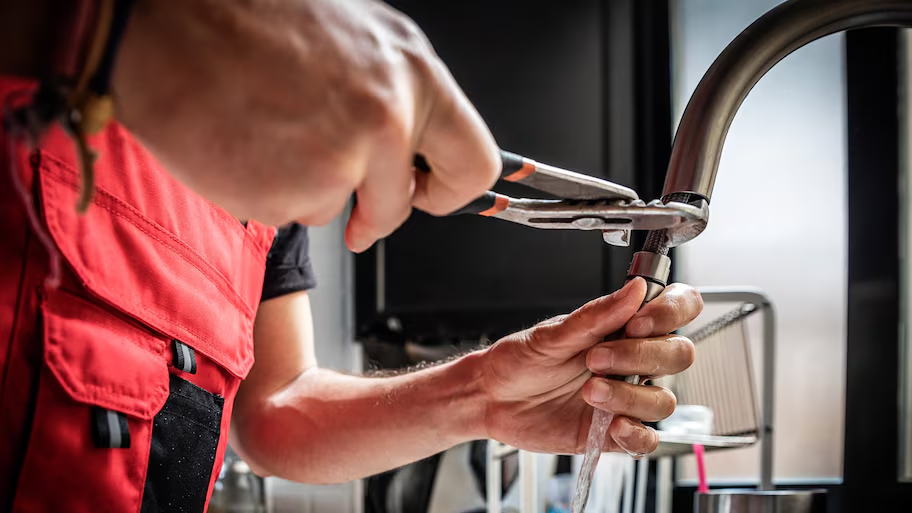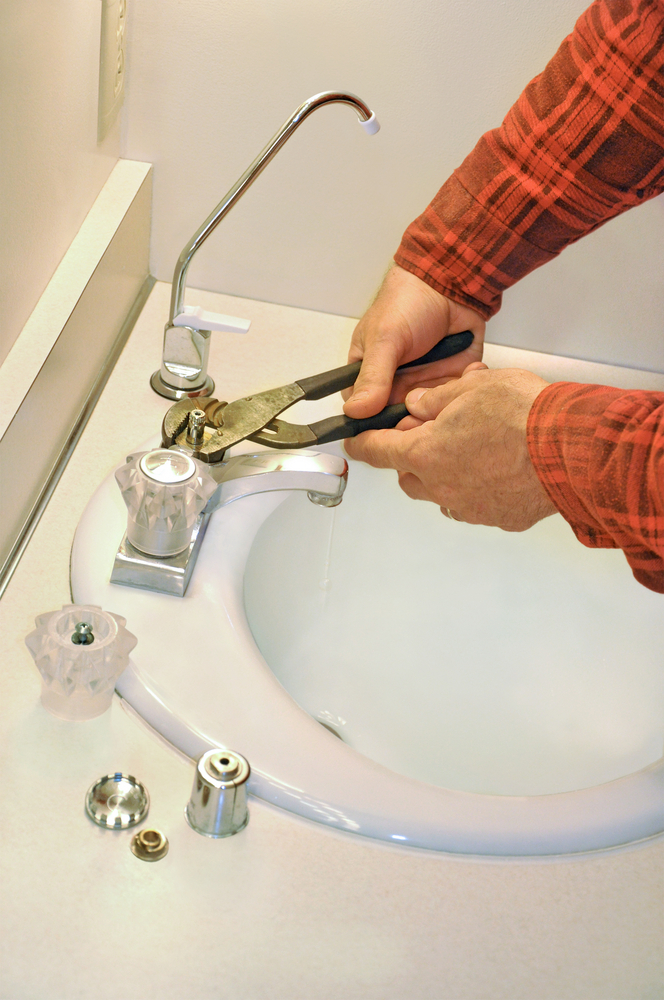Which It's Essential to Mend a Dripping Faucet
Which It's Essential to Mend a Dripping Faucet
Blog Article
Listed here down the page you can discover a lot of incredibly good information related to Why Is It Important To Fix Your Leaking Tap/Faucet?.

Leaking faucets may appear like a minor aggravation, however their impact goes beyond just the aggravation of the sound. From drainage to incurring unneeded financial prices and health risks, overlooking a leaking tap can result in different effects. In this article, we'll delve into why it's crucial to address this usual family concern without delay and properly.
Wastage of Water
Environmental Influence
Dripping taps contribute considerably to water wastage. According to the Environmental Protection Agency (EPA), a single faucet leaking at one drip per second can lose more than 3,000 gallons of water each year. This not just stress water sources but likewise affects ecological communities and wildlife based on them.
Financial Costs
Increased Water Expenses
Beyond the ecological influence, trickling taps can pump up water bills considerably. The gathered waste gradually translates right into higher utility expenditures, which can have been prevented with prompt repair services.
Prospective Home Damage
In addition, long term dripping can cause harm to fixtures and surface areas bordering the faucet. Water accumulation can create staining, corrosion, and also structural problems if left ignored, leading to added repair service expenses.
Health and wellness Issues
Mold And Mildew and Mildew Growth
The continuous visibility of dampness from a dripping faucet creates a suitable atmosphere for mold and mildew and mold development. These fungi not only compromise interior air quality yet likewise present wellness risks, specifically for individuals with respiratory conditions or allergies.
Waterborne Conditions
Stationary water in leaking taps can end up being a breeding place for bacteria and other microorganisms, enhancing the danger of waterborne illness. Impurities such as Legionella microorganisms prosper in stationary water, potentially resulting in serious health problems when ingested or inhaled.
DIY vs. Expert Repair service
Pros and Cons of DIY Repair
While some might attempt to take care of a dripping faucet themselves, do it yourself repair services come with their own collection of obstacles. Without correct knowledge and tools, DIY attempts can exacerbate the issue or lead to incomplete repair services, prolonging the trouble.
Advantages of Working With a Specialist Plumber
Working with an expert plumber makes sure that the underlying source of the trickling tap is addressed effectively. Plumbings have the experience and equipment to detect and fix faucet issues effectively, conserving time and minimizing the threat of further damages.
Step-by-Step Overview to Fixing a Dripping Tap
Devices Required
Prior to trying to deal with a dripping faucet, gather the essential tools, including a flexible wrench, screwdrivers, substitute parts (such as washing machines or cartridges), and plumber's tape.
Usual Tap Issues and Their Solutions
Identify the kind of tap and the specific issue triggering the drip. Typical issues consist of damaged washing machines, corroded shutoff seats, or faulty O-rings. Describe maker directions or on-line tutorials for detailed advice on repair work.
Preventive Measures
Normal Maintenance Tips
To avoid dripping faucets, carry out routine upkeep such as cleaning up aerators, examining for leaks, and replacing damaged components promptly. Additionally, take into consideration installing water-saving devices or updating to much more reliable fixtures.
Value of Prompt Services
Dealing with trickling faucets as quickly as they're observed protects against additional water wastage and potential damage, inevitably conserving both water and cash in the future.
Effect On Building Value
Perception of Well-Maintained Residential Or Commercial Property
Keeping a residential property in good condition, including resolving maintenance issues like dripping faucets, enhances its viewed value and value among potential customers or tenants.
Influence on Resale Value
Qualities with well-maintained plumbing components, consisting of taps, command higher resale worths in the property market. Resolving trickling taps can contribute to a favorable perception during residential or commercial property examinations and arrangements.
Ecological Obligation
Private Contribution to Conservation
Taking obligation for fixing dripping taps straightens with more comprehensive efforts towards water preservation and environmental sustainability. Every individual's activities jointly make a considerable impact on preserving precious sources.
Sustainable Living Practices
By prioritizing punctual repair services and embracing water-saving habits, people contribute to sustainable living techniques that profit both existing and future generations.
Verdict
Addressing a leaking faucet exceeds mere ease; it's a necessary step towards preserving water, decreasing economic costs, and guarding health and home. Whether through DIY repair services or professional assistance, taking action to deal with leaking faucets is a little yet impactful method to advertise liable stewardship of resources and contribute to a healthier, much more lasting future.
How to Fix a Dripping or Leaky Faucet
A leaking faucet is one of the most common problems that homeowners encounter, but it being commonplace doesn’t make it any less annoying. The constant drip drip drip of a leaking bathtub faucet, showerhead, or sink tap can disturb your home’s serenity. Left neglected, a dripping faucet can also result in higher water bills and discoloration or mold growth in your sink or plumbing fixtures.
Fortunately, you don’t have to be a trained plumber to know how to stop a dripping faucet. With some basic tools, replacement parts, and a little patience, leaky faucet repair is a breeze. In this article, we’ll explain what causes dripping faucets and how you can fix them.
What Causes a Leaking Faucet?
Kitchen and bathroom faucets come in all manner of designs, but most involve some combination of valves, O-rings, seals, and washers. The O-ring is usually the weakest link, but any one of these pieces can wear down over time. Heat, moisture, temperature fluctuations, minerals, mold, and movement can contribute to warping and corrosion, breaking the watertight seal. This just comes with the territory of being a homeowner. Everything is always subject to wear and tear, and some component parts of your appliances and fixtures need to be replaced on occasion. At least replacement O-rings are cheap!
More rarely, dripping faucets can be a symptom of excessively high water pressure. Were this the case in your home, you would probably notice that the leak is not isolated to one faucet. Water pressure issues are harder to resolve on your own. We recommend contacting a professional plumber if you suspect your water pressure is too high.
How to Fix a Dripping Faucet
Pipe wrench or monkey wrench Allen wrench set Screwdrivers Old towel or rag Shut off the water.
Before you do anything, you need to turn off the water to keep from drenching your kitchen or bathroom. You should find a valve under the sink and against the wall. Once you’ve turned this valve, try turning the faucet on to confirm that the water source has been cut off.
If you can’t locate your local valve for the faucet you’re working on, you can always shut off the water to the house at the main valve. Of course, this will prohibit anyone from using the sinks, showers, or toilets while you’re working on the faucet that’s giving you trouble.
Plug or block the drain.
You’ll be disassembling the faucet and removing some small bits of hardware. Plug the drain with a stopper or rag to avoid the possibility of a small screw falling into your P-trap.
Take apart the faucet assembly.
There are several varieties of kitchen and bathroom faucets, each with its own manner of assembly. For detailed instructions on how to disassemble your faucet, you can refer to the fixture’s manual or contact the manufacturer. If you know whether you have a ball, disc, cartridge, or compression faucet, you can find detailed schematics online.
In general, you need to begin by removing the faucet handles. You might notice a small screw that you’ll need to remove with a screwdriver or Allen wrench. If you don’t see any visible securing hardware, it’s likely hidden under a decorative cap that can be unscrewed or popped off with flathead screwdriver.
Remove each piece methodically, consulting a schematic when necessary. Take notes or arrange the pieces in such a way to make it easier to correctly reassemble the faucet later.
Remove the cartridge.
Once you’ve removed the handles and securing hardware, you should be able to remove the valve cartridge or stem. Some cartridges will slide right out. Other faucet models will require you to loosen a nut with a pipe wrench before you can remove the valve stem.
Examine the exposed hardware.
With the cartridge or stem removed, inspect the component parts. Check the rubber O-rings for wear and tear. Also examine the seat washer for corrosion or other damage. These pieces are usually the responsible parties for a dripping faucet, but it’s worth inspecting the other component parts while you have the faucet disassembled.
Find replacement parts.
Once you’ve identified which faucet component has failed, find an identical replacement. Your local hardware store should have O-rings, seat washers, and other standard components in stock. If you have a luxury or uncommon faucet, you may have to contact the manufacturer for a replacement part.
It’s a good idea to take your old parts with you to the hardware store so you can compare them with the store’s inventory and be sure you’re purchasing the correct replacement.
Reassemble the faucet.
With your new parts in hand, reconstruct the faucet and handles. Don’t be tempted to overtighten screws or nuts. You might think this could create a better seal, but it can instead damage or bend a delicate part of the assembly and create a new problem for you.
Turn on the water and test the faucet.
The only thing left to do is test your work. Unplug the sink, turn the water back on, and try the faucet. Congratulate yourself on a job well done!
https://www.libertyhomeguard.com/how-to-fix-a-dripping-or-leaky-faucet/

Hopefully you liked our excerpt about Should I Repair or Replace a Leaky Faucet?. Thanks a ton for finding the time to browse our posting. For those who liked our page if you please don't forget to pass it around. We recognize the value of reading our article about Why It's Important to Fix Leaky Faucets.
Report this page